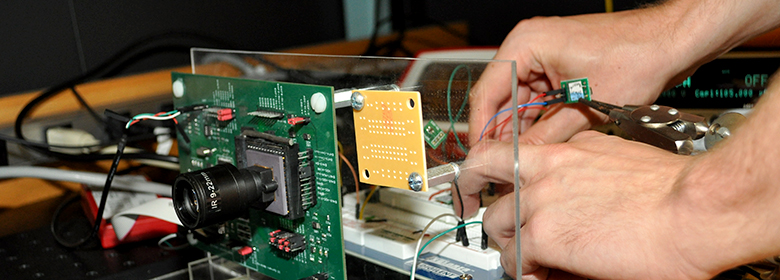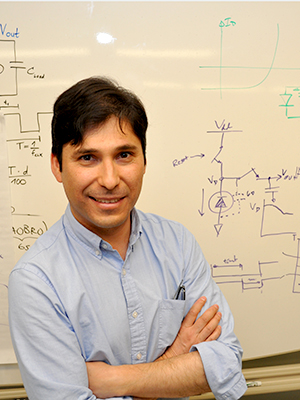
Daniel Leon-Salas, associate professor of engineering technology, wants his camera’s light sensor to do more. After all, when a camera is not taking pictures, its sensor is not called upon to do anything. His National Science Foundation-funded research focuses on using the light sensor as a type of solar cell that can harvest energy when it isn’t capturing images.
He is combining research in compressed sensing and energy harvesting to achieve his results. Compressed sensing allows the silicon chip to collect data in a compressed form instead of in megapixels that need to be compressed later. The pixels on the chip also can be reconfigured to act as light sensors or solar cells, depending on what is needed at the time.
 “We have a couple of prototypes that have demonstrated the concept,” Leon-Salas said. “We can get enough power for the camera to power itself if it takes a picture every three to five seconds.”
“We have a couple of prototypes that have demonstrated the concept,” Leon-Salas said. “We can get enough power for the camera to power itself if it takes a picture every three to five seconds.”
Now that the proof of concept is complete, the more exciting work of devising applications can occur.
“What if we can use this camera as the eyes of the robot? When it needs recharging, it can track the sun. And we would be reusing something that is already there,” he said. Such technologies could be beneficial for space exploration, surveillance or monitoring applications.
As his research continues, Leon-Salas will experiment with using light emitting diodes (LEDs) as the light sensitive elements. He will also explore the geometry of the camera; it could be curved to mimic the eye of a fly or it could be stretchable.
Leon-Salas has applied for a patent for the process he developed. The work was completed as part of an NSF Faculty Early Career Development Program (CAREER).
